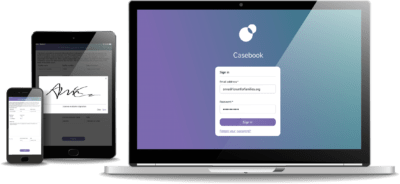The imbalance between foster family availability and children in need of foster care leads to a constant cycle of recruiting, training and licensing new foster families. The foster care licensing process is vital to ensure children are placed in safe and loving homes but it can take several months for a single family to be licensed – a huge time commitment for both families and licensing caseworkers. State and Community Based Organizations are constantly working to increase their pool of foster families and speed up the licensing process in order to meet the needs of the children they serve.
As telecommuting and remote work becomes more common, now is a great time for organizations to explore how to scale operations and take new approaches to old processes. At Casebook, we are committed to helping Human Services organizations grow exponentially and achieve the best outcomes with the help of technology. One way we do this is by identifying which parts of the process are inefficient and labor-intensive, and building user-friendly products to handle the heavy lifting for both caseworkers and prospective foster families.





